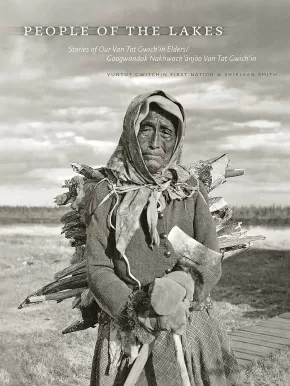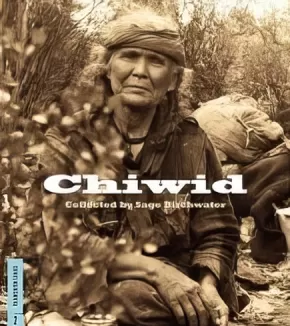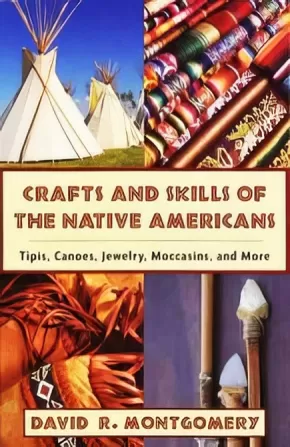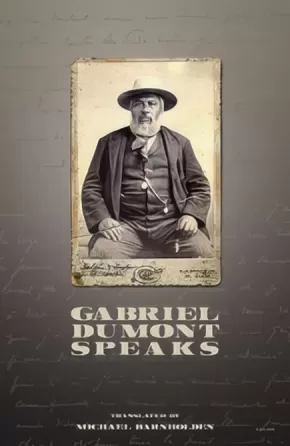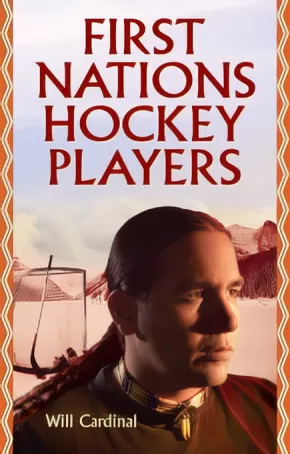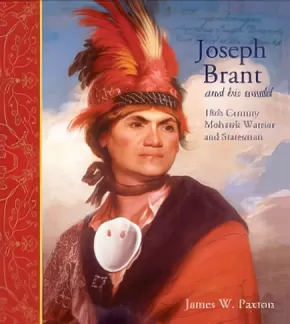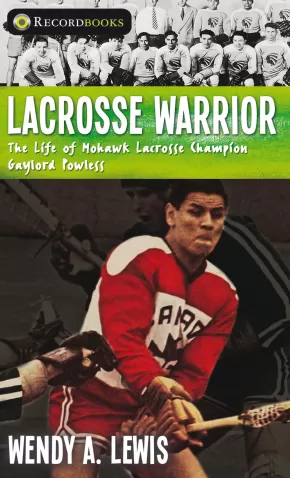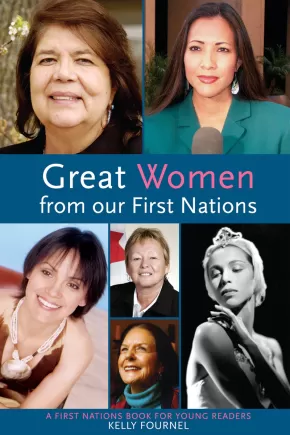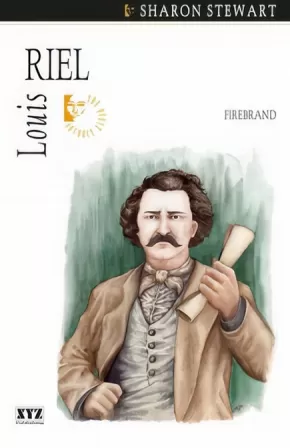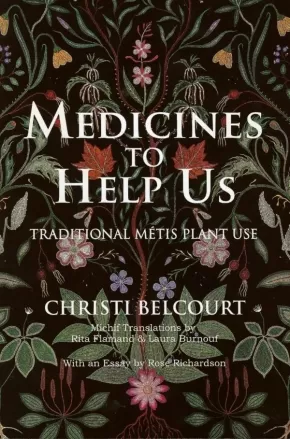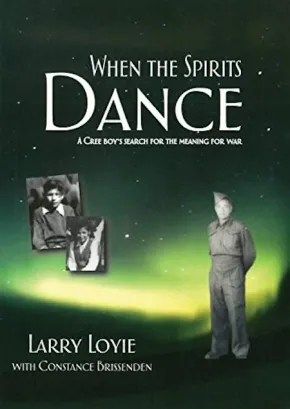
Indigenous Peoples in Canada
346
-
360
of
373 Results;
Sort By
Go To
of 25
People of the Lakes: Stories of Our Van Tat Gwich'in Elders / Googwandak Nakhwach'anjoo Van Tat Gwich'in
$44.99
Format:
Paperback
Text Content Territories:
Indigenous Canadian; First Nations; Dene; Dinjii Zhuh (Gwich'in);
ISBN / Barcode: 9780888645050
Synopsis:
Synopsis:
Many people have a mental picture of the Canadian north that juxtaposes beauty with harshness. For the Van Tat Gwich'in, the northern Yukon is home, with a living history passed on from elders to youth. This book consists of oral accounts that the Elders have been recording for 50 years, representing more than 150 years of their history, all meticulously translated from Gwich'in. Yet this is more than a gathering of history; collaborator Shirleen Smith provides context for the stories, whether they are focused on an individual or international politics. Anthropologists, folklorists, ethnohistorians, political scientists, economists, members of First Nations, and readers interested in Canada's northernmost regions will find much to fascinate them.
Additional Information
|
Chiwid
$19.00
Format:
Paperback
Text Content Territories:
Indigenous Canadian; First Nations; Dene; Tsilhqot'in (Chilcotin);
ISBN / Barcode: 9780921586395
Synopsis:
Synopsis:
Chiwid was a Tsilhqot'in woman, said to have shamanistic powers, who spent most of her adult life "living out" in the hills and forests around Williams Lake, BC. Chiwid is the story of this remarkable woman told in the vibrant voices of Chilcotin oldtimers, both native and non-native.
Reviews
"Chiwid was a Chilcotin woman who lived outside, self-sufficiently for most of her life and moving camps with the seasons. Chiwid is a collection of oral histories about the woman, her family and what life was like in the Chilcotin area of British Columbia in the early to mid-1900s." - The Association of Book Publishers of BC. BC Books for BC Schools. 2009-2010.
Additional Information
128 pages | 8.00" x 9.00"
Authenticity Note: This book's author is not Indigenous; however, the book has the Authentic Indigenous Text label because it contains stories collected by the author from Indigenous and non-Indigenous peoples. It is up to readers to determine if this book will work as an authentic text for their purposes.
Crafts and Skills of the Native Americans: Tipis, Canoes, Jewelry, Moccasins, and More (3 in Stock) - ON SALE!
$16.00 $19.95
Format:
Paperback
Text Content Territories:
Indigenous American; Native American;
Reading Level: N/A
ISBN / Barcode: 9781602396760
Synopsis:
Synopsis:
Crafts and Skills of Native Americans is a fascinating, practical guide to the skills that have made Native Americans famous worldwide as artisans and craftsmen. Readers can replicate traditional Native American living by trying a hand at brain tanning, identifying animal tracks, or constructing a horse saddle. Readers can even make distinctive Native American beaded jewelry, a variety of moccasins, headdresses, and gourd rattles. Native American style is unique and popular, especially among young people, historians, and those with a special interest in the American West.
Additional Information
240 pages | 5.50" x 8.50"
Gabriel Dumont Speaks: Revised 2nd Edition
$16.95
Format:
Paperback
Text Content Territories:
Indigenous Canadian; Métis;
ISBN / Barcode: 9780889226258
Synopsis:
Synopsis:
Gabriel Dumont's memoirs present a rare view of Métis history as told by one of their key heros.
In 1903, eighteen years after leading the Métis Army against the Northwest Expeditionary Force and the Northwest Mounted Police at Fish Creek, Duck Lake and Batoche, Louis Riel’s Adjutant General Gabriel Dumont dictated his memoirs to a group of friends, one of whom is thought to have written Dumont’s stories out in longhand during that epic meeting. This manuscript languished unseen and unpublished in the Manitoba Provincial Archives as part of L’Union nationale métisse de Saint-Joseph collection until its discovery there by Michael Barnholden in 1971. Now re-translated into English, it preserves the record of an unrepeatable oral recital, offering us a rare opportunity to view one of the central events in the history of the Métis in a new context: as perceived by one of their key heroes.
Like Riel, Dumont put the interest of his people ahead of his own. Although he could neither read nor write, he was an eloquent speaker, sought after to defend Métis rights both in Canada and the United States throughout the 1880s and 1890s. Known to have spoken Blackfoot, Sioux, Crow, Cree, French and English, Dumont dictated his memoir in “incipient Michif,” thought to be his first language: using Cree syntax and some verbs, with a vocabulary that was primarily French.
Dumont’s first-person account of the details of his early life, leading up to the events variously referred to as the Riel Rebellion, the Northwest Rebellion or the War of 1885, provide a third reading of the “Rebellion” from the point of view of its military leader, as well as many personal, cultural and historical revelations worthy of examination. In addition, Dumont’s sheer strength of narrative carries these decisive events with a conviction, drama and suspense that only the tradition of oral history can deliver.
Pegahmagabow: Life-Long Warrior (1 in stock, in reprint)
$19.95
Format:
Paperback
Text Content Territories:
Indigenous Canadian; First Nations; Anishinaabeg; Ojibway;
ISBN / Barcode: 9780978498290
Synopsis:
Synopsis:
Francis Pegahmagabow was a remarkable aboriginal leader who served his nation in time of war and his people in time of peace, fighting all the way. In wartime he volunteered to be a warrior. In peacetime he had no option. His life reveals how uncaring Canada was about those to whom this land had always been home. A member of the Parry Island band (now Wasauksing First Nation) near Parry Sound, Ontario, Francis served with the Canadian Expeditionary Force in Belgium and France for almost the entire duration of the First World War, primarily as a scout and sniper. Through the horrific battles and inhuman conditions of trench warfare, his actions earned him three decorations for bravery, the most ever received by a Canadian aboriginal soldier. More recently, they inspired the central fictional character in Joseph Boyden's highly acclaimed novel Three Day Road. Physically and emotionally scarred by his wartime ordeals, Francis returned to Parry Island to try to rebuild his life. He had been treated as an equal in the army, but quickly discovered things hadn't changed back in Canada. As a status Indian his life was regulated by the infamous Indian Act and by local Indian agents who seemed bent on thwarting his every effort to improve his lot. So, Francis became a warrior once more, this time in the even longer battle to achieve the right of aboriginal Canadians to control their own destiny. In compiling this account of Francis Pegahmagabow's remarkable life, Adrian Hayes conducted extensive research in newspapers, archives, and military records, and spoke with members of Pegahmagabow's family and others who remembered the plight and the perseverance of this warrior. Originally published by Fox Meadow Creations, Pegahmagabow emerges again in this new Blue Butterfly Books edition, which incorporates additional material and updates some aspects of this unforgettable story, and the confusion that still surrounds it.
Tom Longboat Running Against the Wind
$14.95
Format:
Paperback
Text Content Territories:
Indigenous Canadian; First Nations; Haudenosaunee (Iroquois); Onondaga;
ISBN / Barcode: 9780981094250
Synopsis:
Synopsis:
Tom Longboat was one of the greatest marathon runners of all time and one of the best known athletes in the western world in the early 20th Century. Longboat was an Onondaga who grew up on the Six Nations reserve near Brantford, Ontario. He was an astonishing long-distance runner as an amateur, he set records as a professional, and he served as a dispatch runner during World War One. This book tells the story of one of Canada's greatest athletes.
Aboriginal Canada Revisited (1 in Stock) - ON SALE!
$36.00 $45.00
Editors:
Format:
Paperback
Text Content Territories:
Indigenous Canadian;
ISBN / Barcode: 9780776606798
Synopsis:
Synopsis:
Exploring a variety of topics-including health, politics, education, art, literature, media, and film-Aboriginal Canada Revisited draws a portrait of the current political and cultural position of Canada's Aboriginal peoples. While lauding improvements made in the past decades, the contributors draw attention to the systemic problems that continue to marginalize Aboriginal people within Canadian society.
From the Introduction: "[This collection helps to highlight areas where the colonial legacy still takes its toll, to acknowledge the manifold ways of Aboriginal cultural expression, and to demonstrate where Aboriginal and non-Aboriginal people are starting to find common ground."
Contributors include Aboriginal and non-Aboriginal scholars from Europe and Canada, including Marlene Atleo, University of Manitoba; Mansell Griffin, Nisga'a Village of Gitwinksihlkw, British Columbia; Robert Harding, University College of the Fraser Valley; Tricia Logan, University of Manitoba; Steffi Retzlaff, McMaster University; Siobhán Smith, University of British Columbia; Barbara Walberg, Confederation College.
Suggested use: Grade 12 Law
Authenticity Note: Because its contributions from Indigenous scholars, this book is labelled as containing Authentic Indigenous Text.
Additional Information
436 pages | 6.00" x 9.00"
First Nations Hockey Players
$14.95
Format:
Paperback
Text Content Territories:
Indigenous Canadian; Métis; Inuit; First Nations;
ISBN / Barcode: 9780981094212
Synopsis:
Synopsis:
People of the Mi'kmaq Nation in Nova Scotia were playing a type of ice hockey in the late 1600s. Over the centuries, the role of the First Nations in that sport has been marked by innate ability, enthusiasm and many challenges.
Sandy Lake Cree member Fred Sasakamoose of the Chicago Blackhawks was the first Native to play in the National Hockey League. His achievements were the beginning of a proud history of First Nations hockey players who became NHL heroes on and off the ice.
FIRST NATIONS HOCKEY PLAYERS tells the stories of these great players, Inuit, Ojibwa, Mohawk, Métis, Mi'kmaq, Cree and many other NHL stars with First Nations roots, are highlighted along with current players such as Jonathan Cheechoo, Carey Price, Sheldon Souray and Jordin Tootoo. The book also features tales of hockey greats such as Bryan Trottier, Reggie Leach, Stan Jonathan, Theoren Fleury and Grant Fuhr.
Joseph Brant and His World: 18th Century Mohawk Warrior and Statesman
$19.95
Format:
Paperback
Text Content Territories:
Indigenous American; Native American; Haudenosaunee (Iroquois); Kanyen'keha:ka (Mohawk);
ISBN / Barcode: 9781552770238
Synopsis:
Synopsis:
Joseph Brant was a promising but undistinguished Mohawk warrior living in upper New York State. He became an innovative, influential leader and spokesperson for First Nations, whose support for Britain during the American Revolution led to their resettlement in Upper Canada along the Grand River. Their descendants live today on the large Six Nations Reserve alongside the Grand, south of Brantford in southwestern Ontario.
This new, illustrated biography of Brant reflects recent research into the political, social and cultural background of his life. Author James Paxton rejects the interpretation of earlier biographers, who depicted Brant as a man who belonged neither to the "Indian" or the "white" world. Paxton shows that Brant was fully Mohawk, with Iroquoian values that stressed the interdependence of people. He stands as the product of a unique, multicultural 18th-century community in the Mohawk Valley, New York.
Using skill and diplomacy and his dense network of relationships and alliances, Brant attempted to ensure the ongoing social, economic and political autonomy of the Six Nations in their new Canadian territory.
The events of Brant's day impinge directly on our own. It would be hard to imagine the standoff at Caledonia had Brant not led the Six Nations to the Grand River area and then invited Loyalists to settle among them. Yet, in 1784, Mohawks and Loyalists envisioned a different sort of community, one bound by history, common interest and shared practices. At a time when First Nations' claims against the government promise to become more numerous and confrontational, this book encourages us to consider the inclusive and multicultural legacy of Joseph Brant.
Additional Information
96 pages | 8.26" x 9.01"
Lacrosse Warrior: The Life of Mohawk Lacrosse Champion Gaylord Powless
$9.95
Format:
Paperback
Text Content Territories:
Indigenous Canadian; First Nations; Haudenosaunee (Iroquois); Kanyen'keha:ka (Mohawk);
ISBN / Barcode: 9781552770016
Synopsis:
Synopsis:
Gaylord Powless was playing lacrosse by the age of three. He descended from generations of Mohawk lacrosse players and possessed great skill, but his native ancestry made him the target of brutal checking, and slashing. This is a compelling story of how this champion learned to deal with emotions.
Ideal for reluctant readers.
Educator & Series Information
Recommended Ages: 12-18.
Fry Reading Level: 4.5
This book is part of the Recordbooks Series. Recordbooks help reluctant readers understand social issues through the lens of a true story of a sports hero.
Series features:
- Ideal for reluctant readers
- Hi-lo
- Short chapters, easy-to-read format
- Great for ESL and adult students
- Writing with a flair for making history feel like novels
- Accompanied by historical photos and sports trivia
- Ideal for ages 12+
Additional Information
120 pages | 4.25" x 7.00"
Great Athletes from our First Nations
$10.95
Format:
Paperback
Text Content Territories:
Indigenous American; Indigenous Canadian;
ISBN / Barcode: 9780977918300
Synopsis:
Synopsis:
Great Athletes from our First Nations profiles thirteen outstanding athletes in such diverse sports as figure skating, race car driving, skiing and bowling. The athletes featured in this book include: Ross Anderson, downhill skier; Richard Dionne, champion basketball player; Mike Edwards, professional bowler; Shelly Hruska, professional ringette player; Beau Kemp, professional baseball player, etc.
Reviews
"Smoothly-written and enriched with photography and sidebars that give additional information about the sport or athlete."— Kliatt, May 2008
"A must-have in every school and public library, it can be used for cross-cultural education and healthy lifestyles."— Resource Links, June 2007
Educator & Series Information
This book is part of the First Nations Series for Young Readers. Each book is a collection of biographies of First Nations, Métis, and Inuit women and men who are leaders in their fields of work, in their art, and in their communities.
For ages 9-14.
Additional Information
128 pages | 6.00" x 8.92"
Great Women from our First Nations
$10.95
Format:
Paperback
Text Content Territories:
Indigenous American; Indigenous Canadian;
ISBN / Barcode: 9781897187258
Synopsis:
Synopsis:
This book profiles ten outstanding women leaders in the Native community. All of these successful, trailblazing women are stellar role models who have raised the profile of indigenous culture in North America. From heroines of the past to women making new history today, this exciting work of nonfiction reminds readers of the extraordinary contributions of Native Americans to our daily lives.
Educator & Series Information
This book is part of the First Nations Series for Young Readers. Each book is a collection of biographies of First Nations, Métis, and Inuit women and men who are leaders in their fields of work, in their art, and in their communities. For ages 9-14.
Additional Information
89 pages | 6.00" x 8.98"
Louis Riel: Firebrand (1 in Stock) - ON SALE!
$13.00 $17.95
Format:
Paperback
Text Content Territories:
Indigenous Canadian; Métis;
ISBN / Barcode: 9781894852265
Synopsis:
Synopsis:
Louis Riel devoted his life to the Métis cause. A fiery activist, he struggled against injustice as he saw it. He was a pioneer in the field of Aboriginal rights and land claims but was branded an outlaw in his own time. In 1885, he was executed for treason. In 1992, the House of Commons declared Riel a founder of Manitoba. November 16 is now designated Louis Riel Day in Canada.
Additional Information
208 pages | 5.50" x 8.50"
Medicines to Help Us: Traditional Métis Plant Use
$25.00
Artists:
Text Content Territories:
Indigenous Canadian; Métis;
ISBN / Barcode: 9780920915790B
Synopsis:
Synopsis:
Based on Métis artist Christi Belcourt’s painting “Medicines to Help Us,” this innovative and vibrant resource honours the centuries-old healing traditions of Métis women. With contributions from Métis Elders Rose Richardson and Olive Whitford, as well as key Michif phrases and terminology, Medicines to Help Us is the most accessible resource relating to Métis healing traditions produced to date.
Educator Information
This resource guide does not include the study prints referred to on the back cover and within the book.
Michif Translators: Laura Burnoff and Rita Flamand
Elder Validation: Rose Richardson
Format: Book Only - English, with plant names in Michif, Nehiyawewin (Cree), and Anishinaabemowin (Ojibway)
When The Spirits Dance
$16.95
Format:
Paperback
Text Content Territories:
Indigenous Canadian; First Nations; Cree (Nehiyawak);
ISBN / Barcode: 9781926886022
Synopsis:
Synopsis:
When Lawrence's father goes overseas with the Canadian Army during the Second World War, the young Cree boy struggles to grow up while wrestling with the meaning of war. With Papa gone, Mama raises the children alone. Traditional foods like wild meat and fish are scarce and many other foods are rationed. Angry about the changes and confused about the future, Lawrence misses his father and his teachings about their natural way of life. When army runaways threaten the family, Lawrence's courage and knowledge of traditional skills are called upon to keep them safe. With guidance from his grandfather and encouragement from his grandmother, Lawrence faces his challenges, becoming wiser and stronger, and earning the respect of his elders.
Educator & Series Information
Recommended for grades 4 to 9.
This book is part of The Lawrence Series.
Additional Information
44 pages | 7.75" x 10.54"
Sort By
Go To
of 25

